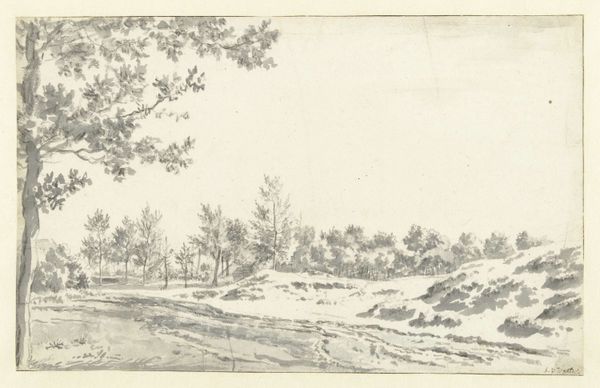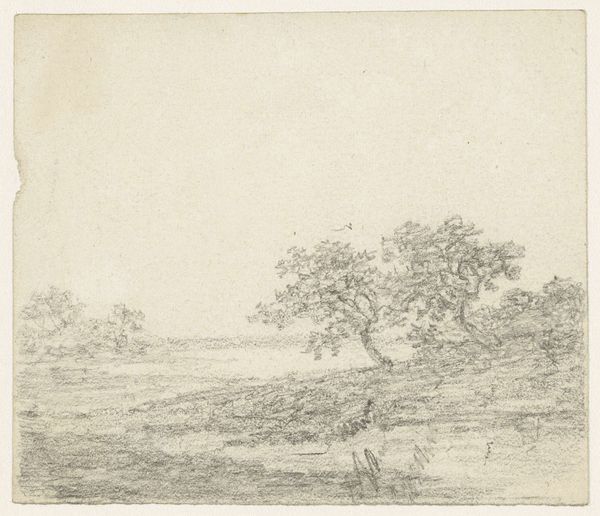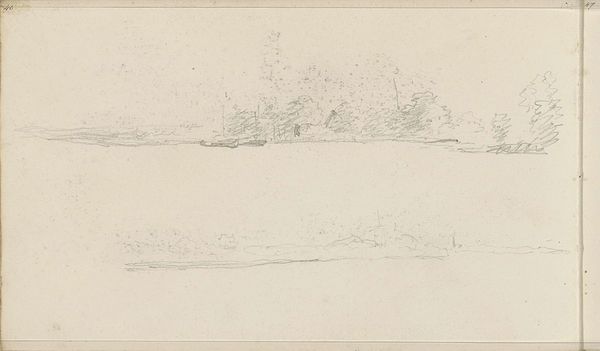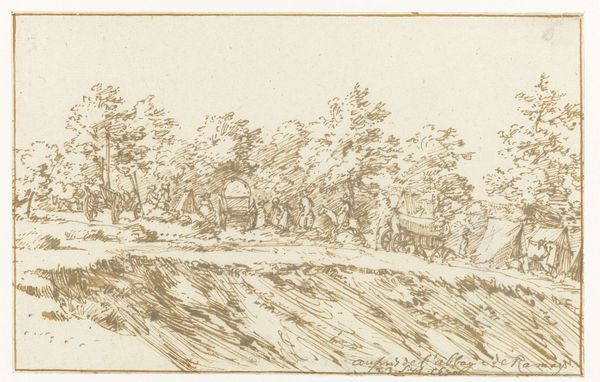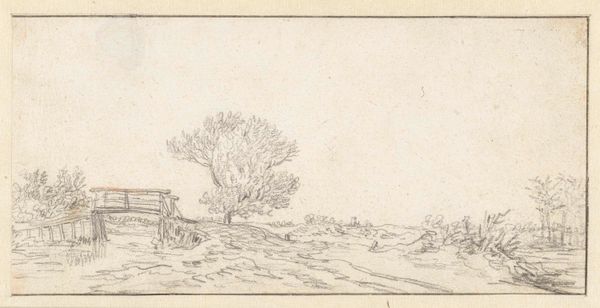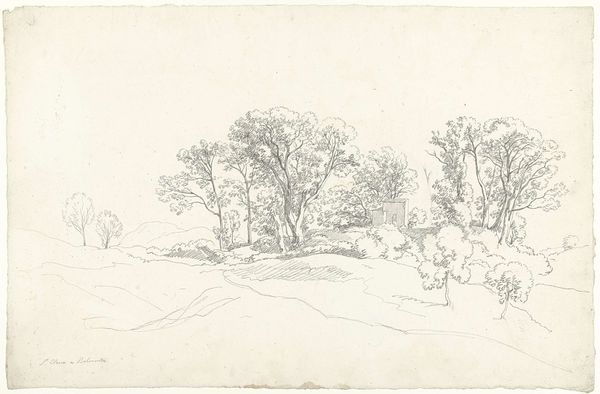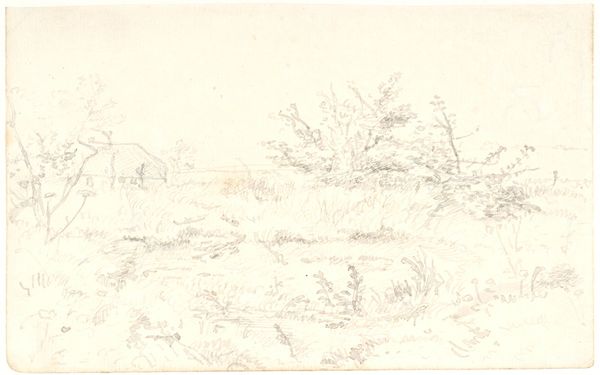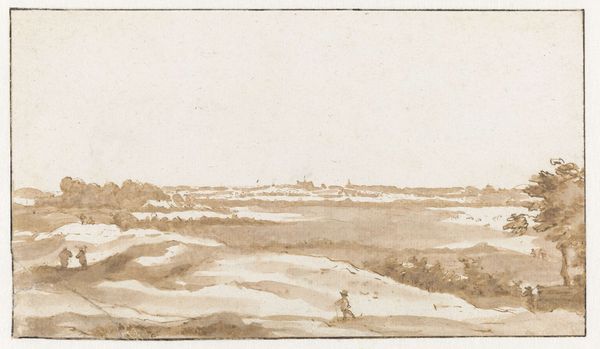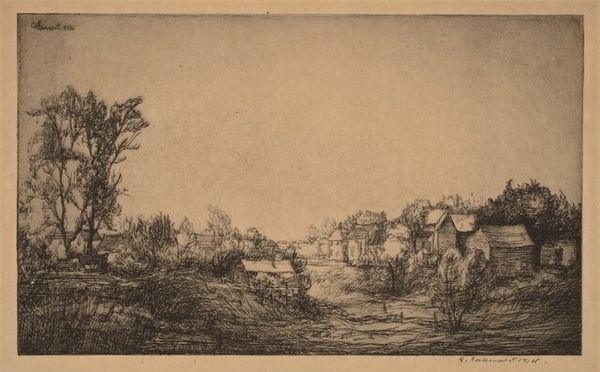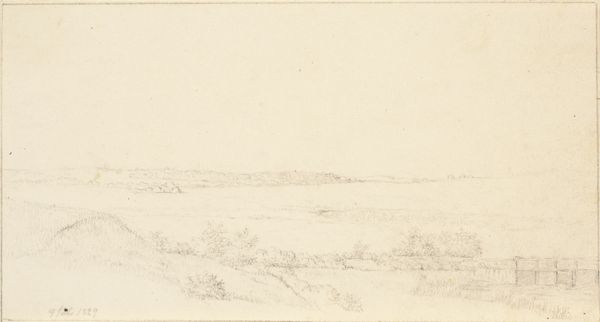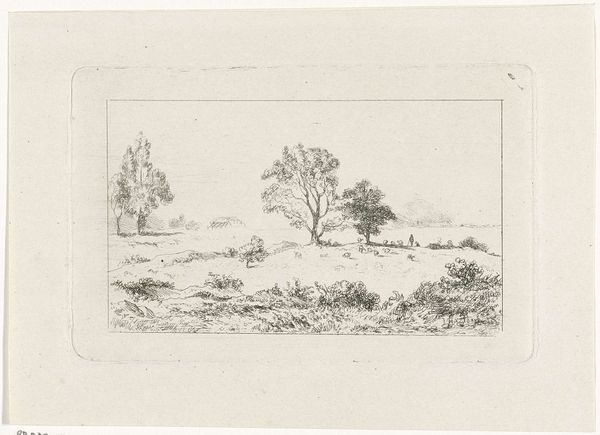
drawing, pencil
#
drawing
#
pen sketch
#
pencil sketch
#
landscape
#
pen-ink sketch
#
pencil
#
pen work
#
pencil work
#
northern-renaissance
#
realism
Dimensions: height 208 mm, width 326 mm
Copyright: Rijks Museum: Open Domain
Curator: Good morning. We’re looking at "Duinlandschap met huisje," or "Dune Landscape with Cottage," attributed to Pieter Ernst Hendrik Praetorius, created sometime between 1801 and 1876. Editor: It’s quiet. Serene. The unassuming, almost diminutive cottage in the distance suggests isolation, a solitary existence perhaps. And that stark horizon…it feels limitless, yet also confined by its monochrome simplicity. Curator: Indeed. The northern Renaissance influence gives it that very realistic depiction of nature while perhaps glorifying the quiet existence within its boundaries. This realism marked a shift in the accessibility of art for broader audiences and also its value. How do you feel about it? Editor: What strikes me is the raw materiality. Pencil and ink, seemingly simple tools, yet wielded with such precision. Notice how the varying pressures create depth, sculpting the dunes and defining the subtle textures of the grasses. This would require readily available materials, reflecting a direct relationship to his surroundings and time. Curator: I think the landscape paintings during that time held huge cultural importance. Landscapes offered more than just scenery; they helped define the Dutch national identity and served as records of agricultural land and how the cottage serves the role as a symbol of community and settlement, subtly referencing our human impact on the land, don't you agree? Editor: Certainly, but there's an inherent social commentary here. This piece offers us a window into labor through its materials, which ties our history and progress directly to land cultivation, ownership and the lives tied to its yields. The materials, labor, and depiction all blend together to offer insight. Curator: I agree. Viewing art offers an intersection between what has been and a future unknown, doesn't it? Editor: I concur; seeing art truly connects materials, and societal impressions which fosters growth, a continuous loop.
Comments
No comments
Be the first to comment and join the conversation on the ultimate creative platform.

